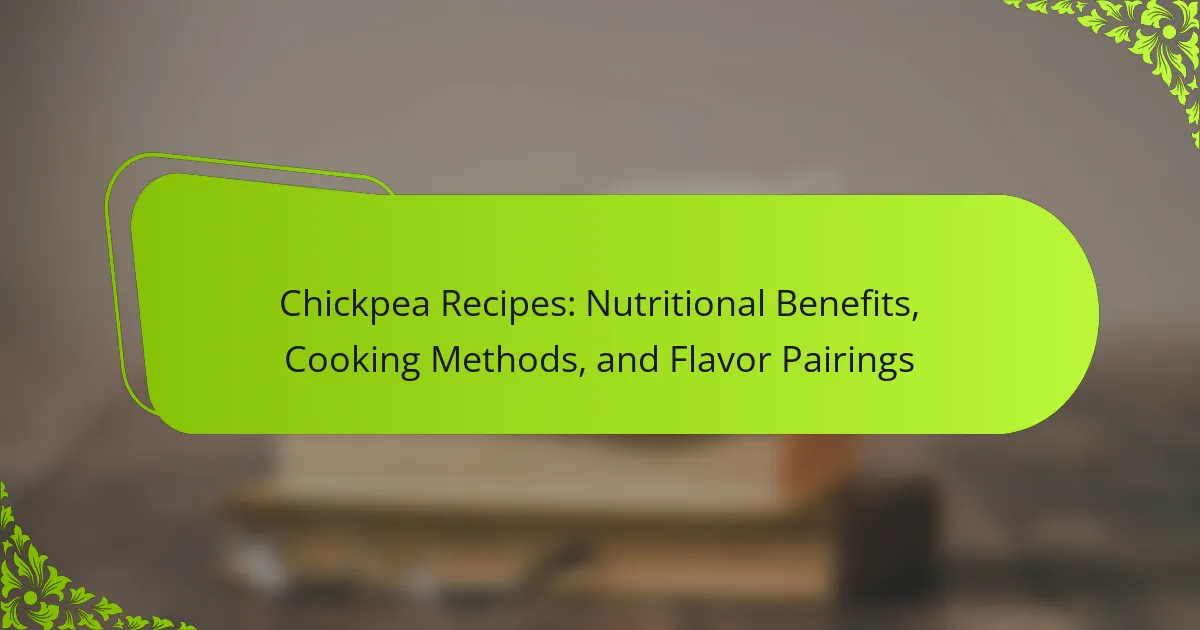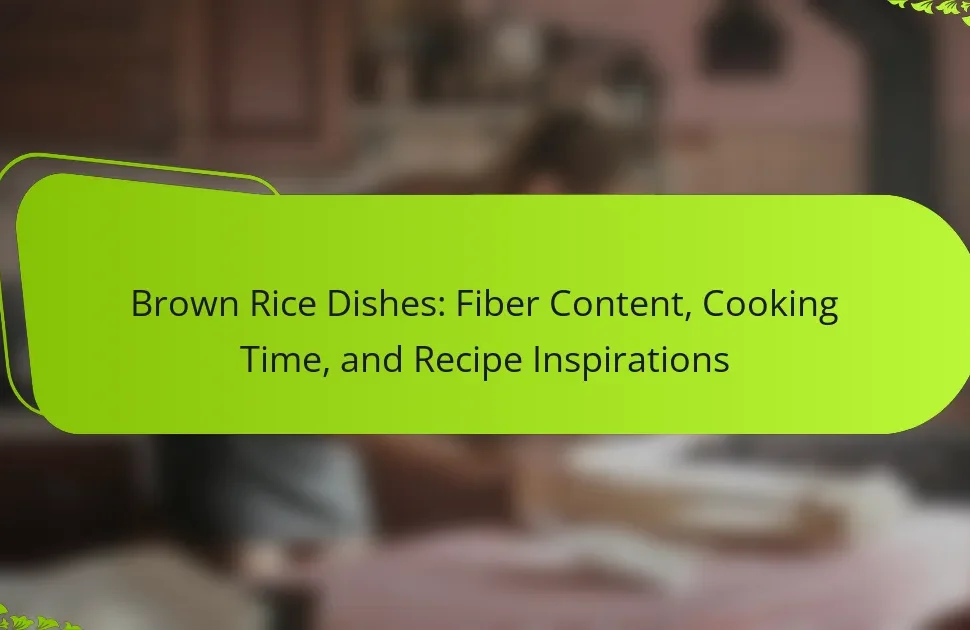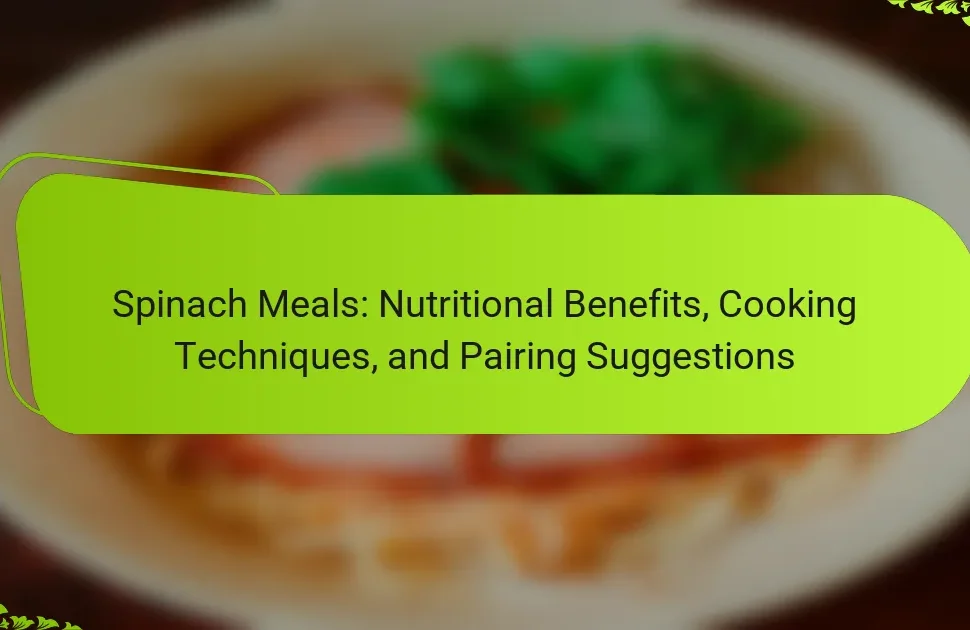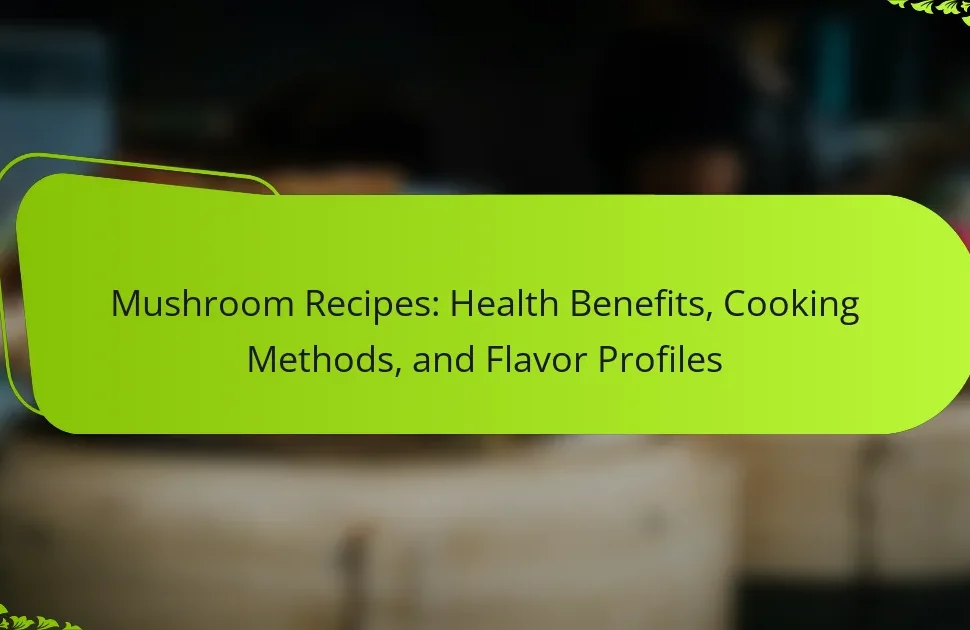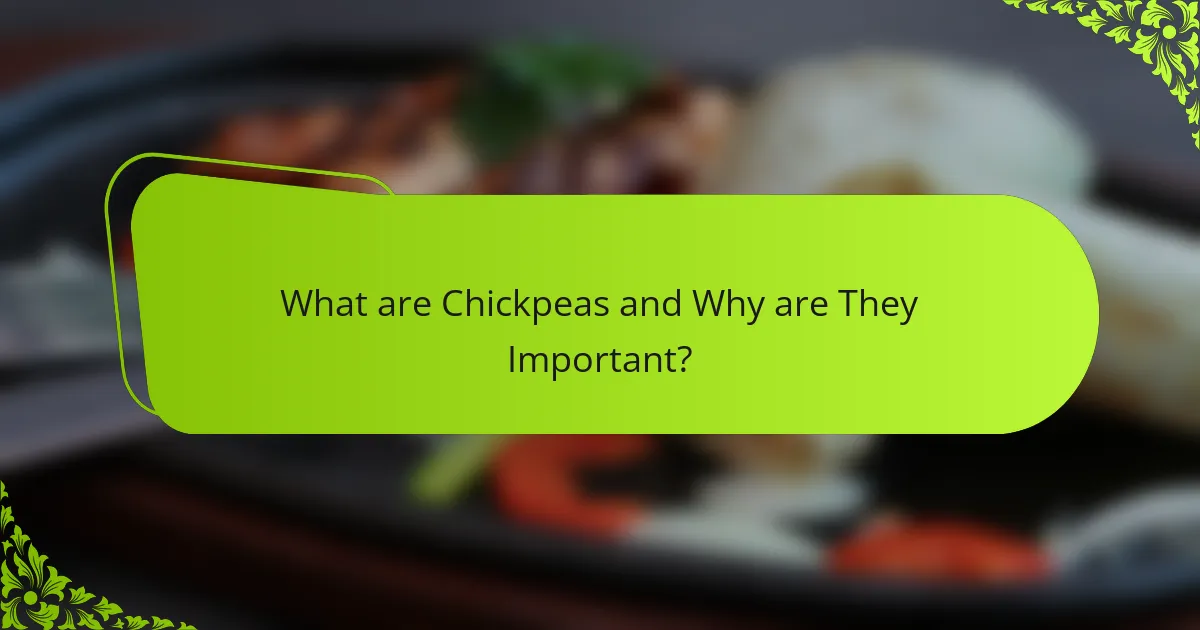
What are Chickpeas and Why are They Important?
Chickpeas are legumes also known as garbanzo beans. They are a rich source of protein, fiber, and essential nutrients. Chickpeas play a vital role in vegetarian and vegan diets due to their high protein content. They contain important vitamins and minerals, including iron, magnesium, and folate. Studies show that chickpeas can help regulate blood sugar levels and promote heart health. Their versatility allows them to be used in various dishes, from salads to stews. The global production of chickpeas was approximately 14 million tons in 2020, underscoring their significance in food systems.
What nutritional benefits do chickpeas provide?
Chickpeas provide numerous nutritional benefits. They are high in protein, offering about 15 grams per cooked cup. Chickpeas are also an excellent source of dietary fiber, with approximately 12 grams per serving. This fiber aids in digestion and promotes satiety.
Additionally, chickpeas contain essential vitamins and minerals. They are rich in folate, providing about 70% of the daily recommended intake per cup. Iron content is also significant, contributing to energy production and immune function. Chickpeas have a low glycemic index, making them suitable for blood sugar control.
They are also a source of healthy fats, primarily polyunsaturated and monounsaturated fats. These fats support heart health. The antioxidants present in chickpeas help combat oxidative stress. Overall, chickpeas are a nutrient-dense food that supports overall health and well-being.
How do chickpeas contribute to a balanced diet?
Chickpeas contribute to a balanced diet by providing essential nutrients and promoting satiety. They are rich in protein, offering about 15 grams per cooked cup. This high protein content supports muscle health and repair. Chickpeas also contain dietary fiber, with approximately 12 grams per cup, aiding in digestion and preventing constipation. Their fiber helps regulate blood sugar levels, contributing to overall metabolic health. Additionally, chickpeas are a source of important vitamins and minerals, including folate, iron, and magnesium. These nutrients support various bodily functions, including energy production and immune health. Regular consumption of chickpeas can help lower cholesterol levels, reducing the risk of heart disease.
What vitamins and minerals are found in chickpeas?
Chickpeas contain several essential vitamins and minerals. They are rich in folate, providing approximately 172 mcg per cup. Chickpeas also contain manganese, offering about 1.7 mg per cup. Additionally, they provide iron, with a content of about 4.7 mg per cup. Other important nutrients include magnesium, with around 78 mg per cup, and phosphorus, supplying about 276 mg per cup. They also contain zinc, contributing approximately 2.5 mg per cup. Chickpeas are a good source of vitamin B6, providing around 0.1 mg per cup. Lastly, they contain small amounts of potassium, delivering about 477 mg per cup. These vitamins and minerals contribute to various health benefits associated with chickpeas.
How do chickpeas fit into various dietary preferences?
Chickpeas are versatile legumes that fit into various dietary preferences. They are suitable for vegetarian and vegan diets due to their high protein content. A one-cup serving of cooked chickpeas contains about 15 grams of protein. This makes them an excellent meat substitute.
Chickpeas are also gluten-free, making them ideal for those with gluten intolerance or celiac disease. They provide essential nutrients such as fiber, iron, and folate. Additionally, chickpeas are low in fat, aligning with low-fat dietary preferences.
Their low glycemic index makes them suitable for diabetics as well. Studies show that chickpeas can help regulate blood sugar levels. Overall, chickpeas are adaptable to various cooking methods and cuisines, enhancing their appeal across different dietary lifestyles.
Why are chickpeas a popular choice for vegetarians and vegans?
Chickpeas are a popular choice for vegetarians and vegans due to their high protein content. They provide approximately 15 grams of protein per cooked cup. This makes them a valuable meat alternative. Chickpeas are also rich in fiber, offering about 12 grams per cup. Fiber aids in digestion and promotes satiety. Additionally, chickpeas contain essential nutrients such as iron, magnesium, and folate. These nutrients support overall health and well-being. Their versatility allows for various culinary uses, from salads to stews. This adaptability appeals to those seeking diverse meal options.
What role do chickpeas play in gluten-free diets?
Chickpeas are a vital component of gluten-free diets. They provide a rich source of protein and fiber. This makes them an excellent alternative to gluten-containing grains. Chickpeas are naturally gluten-free, which ensures safe consumption for individuals with celiac disease or gluten sensitivity. They also contain essential nutrients like iron, magnesium, and folate. Studies show that incorporating chickpeas can enhance the nutritional profile of gluten-free meals. Furthermore, chickpeas can be transformed into flour, which is a popular gluten-free ingredient in baking. Their versatility allows for various culinary applications, making them a staple in gluten-free cooking.
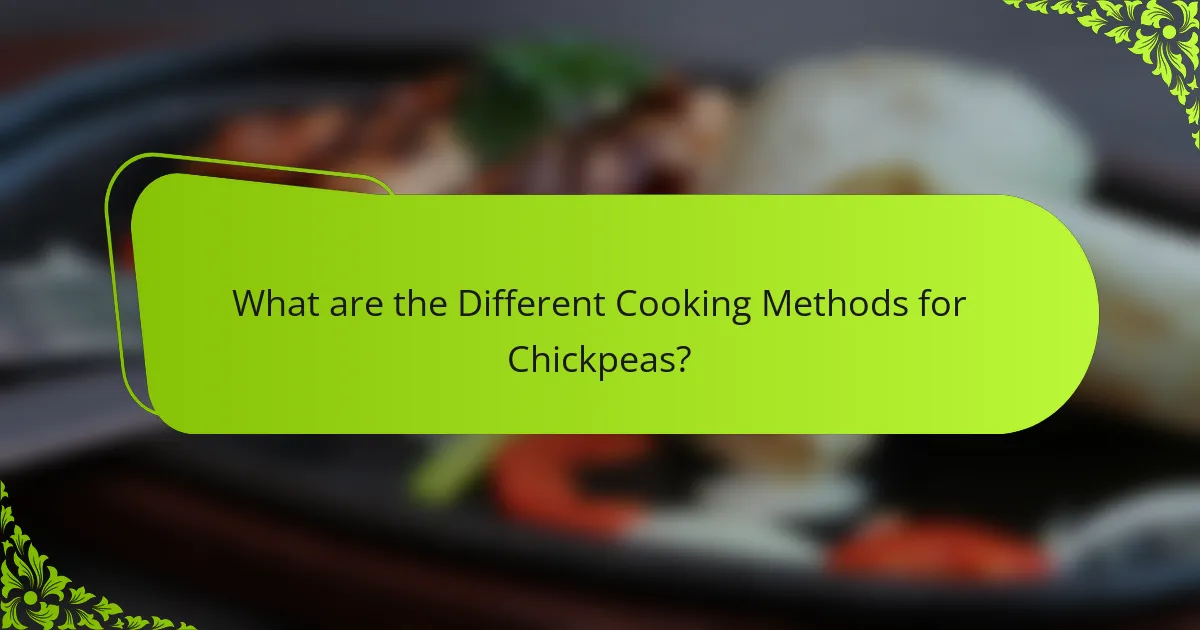
What are the Different Cooking Methods for Chickpeas?
Chickpeas can be cooked using several methods. These include boiling, steaming, roasting, and pressure cooking. Boiling involves simmering soaked chickpeas in water until tender. Steaming cooks them over boiling water, preserving nutrients. Roasting chickpeas in the oven creates a crunchy snack. Pressure cooking significantly reduces cooking time while ensuring tenderness. Each method offers unique textures and flavors, making chickpeas versatile in various dishes.
How can chickpeas be prepared for cooking?
Chickpeas can be prepared for cooking by soaking or boiling. Soaking dried chickpeas overnight in water is a common method. This softens the beans and reduces cooking time. After soaking, drain and rinse the chickpeas before cooking. Alternatively, chickpeas can be boiled directly in water. Boiling typically takes 1 to 2 hours for dried chickpeas. Canned chickpeas require no soaking and can be used directly after rinsing. Proper preparation enhances texture and flavor in dishes.
What is the best way to soak dried chickpeas?
The best way to soak dried chickpeas is to use the overnight soaking method. Start by placing the dried chickpeas in a large bowl. Cover them with at least three inches of water. Let the chickpeas soak for 8 to 12 hours. This method hydrates the beans and reduces cooking time. After soaking, drain and rinse the chickpeas before cooking. The soaking process helps to remove some of the indigestible sugars. This can reduce gas and bloating associated with chickpea consumption.
How does cooking time vary for different chickpea preparations?
Cooking time for chickpeas varies based on preparation methods. Dried chickpeas typically require soaking for 8 hours and then 1 to 2 hours of cooking. Canned chickpeas are pre-cooked and only need to be heated for about 5 to 10 minutes. Roasted chickpeas take approximately 30 to 40 minutes in the oven at 400°F. Pressure cooking dried chickpeas can reduce the time to 20 to 30 minutes. Each method significantly impacts the overall cooking duration.
What are popular cooking methods for chickpeas?
Popular cooking methods for chickpeas include boiling, roasting, and sautéing. Boiling chickpeas is a common method, often used for dried chickpeas. It typically takes 1 to 2 hours to cook them until tender. Roasting chickpeas creates a crunchy snack. This method requires tossing cooked chickpeas with oil and spices, then baking them at 400°F for about 30 to 40 minutes. Sautéing involves cooking chickpeas in a pan with oil and seasonings. This method is quick and enhances the flavor in dishes like stews or salads. Each method showcases the versatility of chickpeas in various cuisines.
How can chickpeas be boiled or steamed?
Chickpeas can be boiled or steamed by following specific methods. To boil chickpeas, start by soaking them in water for 8 hours or overnight. Drain the soaked chickpeas and place them in a pot. Cover them with fresh water, ensuring the water level is about 2 inches above the chickpeas. Bring the water to a boil, then reduce the heat and simmer for 1 to 1.5 hours until tender.
For steaming, rinse the soaked chickpeas and place them in a steamer basket. Fill a pot with water, ensuring it does not touch the chickpeas. Cover the pot and steam for about 40 to 50 minutes until they are soft. Both methods effectively prepare chickpeas for various recipes.
What are the benefits of roasting chickpeas?
Roasting chickpeas provides several health benefits. It enhances their nutritional profile by increasing fiber content. Roasted chickpeas are a good source of protein, offering about 7 grams per serving. They are rich in essential vitamins and minerals, including iron and magnesium. The roasting process also makes them crunchy, providing a satisfying snack alternative. This method reduces their moisture content, resulting in a longer shelf life. Additionally, roasting chickpeas can improve their flavor, making them more palatable. Studies have shown that roasted chickpeas can contribute to weight management due to their high satiety levels.
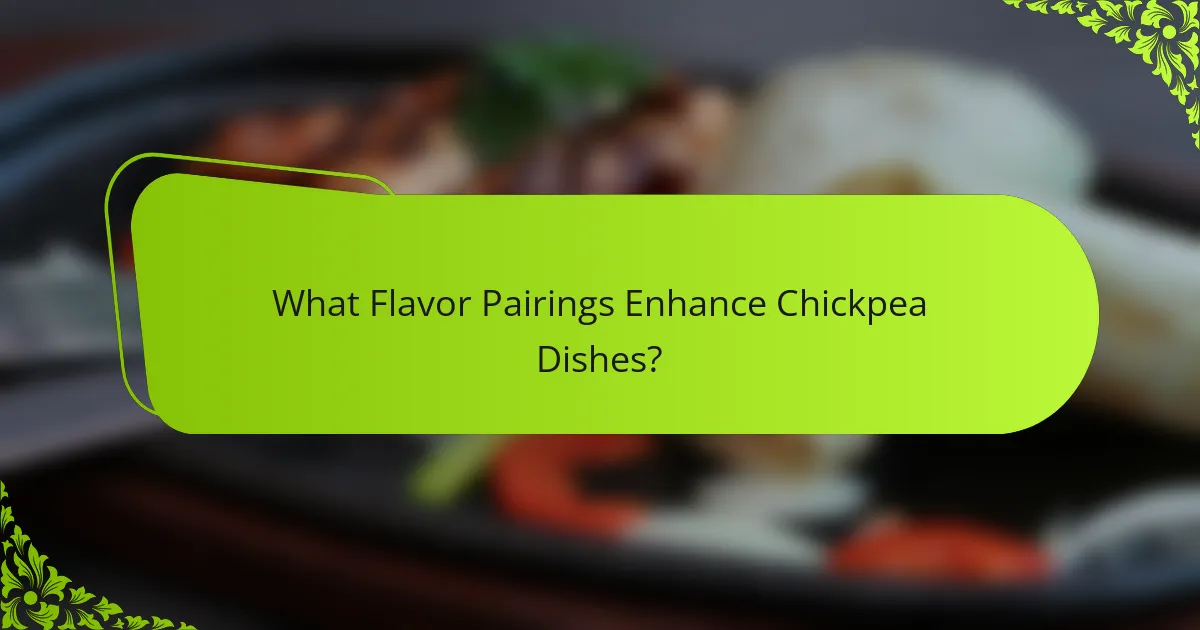
What Flavor Pairings Enhance Chickpea Dishes?
Citrus, garlic, and cumin enhance chickpea dishes. Citrus adds brightness and acidity, balancing the earthiness of chickpeas. Garlic provides a robust flavor that complements the legumes. Cumin introduces warmth and depth, making the dish more aromatic. Herbs like cilantro and parsley also pair well, offering freshness. Spices such as paprika and turmeric can elevate the flavor profile further. These pairings create a harmonious blend, enriching the overall taste experience of chickpea dishes.
What herbs and spices complement chickpeas?
Cumin, coriander, paprika, and turmeric complement chickpeas well. Cumin adds a warm, earthy flavor that enhances chickpea dishes. Coriander brings a citrusy note, balancing the richness of chickpeas. Paprika provides a smoky depth, making it a popular choice in various recipes. Turmeric offers a vibrant color and is known for its anti-inflammatory properties. These herbs and spices are commonly used in Middle Eastern and Indian cuisines, showcasing their versatility with chickpeas.
How can spices elevate the flavor of chickpea recipes?
Spices can significantly elevate the flavor of chickpea recipes by adding depth and complexity. For example, cumin provides a warm, earthy note that enhances the nutty flavor of chickpeas. Paprika adds a smoky sweetness, while turmeric contributes a vibrant color and subtle bitterness.
Additionally, spices like coriander and garam masala introduce citrusy and aromatic elements. These flavor compounds interact with the chickpeas’ natural taste, creating a more balanced dish. Research shows that spices can enhance sensory perception in food, making meals more enjoyable. Thus, incorporating a variety of spices can transform simple chickpea recipes into flavorful culinary experiences.
What are some traditional flavor pairings for chickpeas in global cuisine?
Chickpeas pair well with flavors like garlic, cumin, and lemon in global cuisine. In Mediterranean dishes, they often combine with olive oil and parsley. Indian cuisine features them alongside spices like turmeric and coriander. In Middle Eastern recipes, tahini and sumac are common pairings. These combinations enhance the chickpeas’ nutty flavor and nutritional profile. Historical uses of chickpeas in these cuisines date back thousands of years, showcasing their versatility.
What are some popular chickpea recipes to try?
Popular chickpea recipes include hummus, chickpea salad, and chickpea curry. Hummus is a creamy dip made from blended chickpeas, tahini, lemon juice, and garlic. It is a staple in Middle Eastern cuisine. Chickpea salad combines chickpeas with fresh vegetables, herbs, and a dressing. This dish is refreshing and nutritious. Chickpea curry features chickpeas cooked in a spiced tomato or coconut milk sauce. It is a hearty meal option. Other recipes include roasted chickpeas, falafel, and chickpea stew. Each recipe highlights the versatility of chickpeas in various cuisines.
How can chickpeas be used in salads and soups?
Chickpeas can be used in salads and soups as a nutritious protein source. They add texture and flavor to various dishes. In salads, chickpeas can be tossed with vegetables, herbs, and dressings. They provide a hearty component that enhances the meal. In soups, chickpeas can be blended for creaminess or added whole for bite. They contribute to the dish’s nutritional profile, offering fiber and essential nutrients. Studies show that incorporating chickpeas can improve overall dietary quality. This makes them a versatile ingredient in both salads and soups.
What are innovative ways to incorporate chickpeas into snacks or appetizers?
Chickpeas can be innovatively incorporated into snacks and appetizers by creating chickpea-based hummus with unique flavors such as roasted red pepper or garlic and herb. Another option is to make chickpea salad bites, combining chickpeas with diced vegetables and herbs served on cucumber slices. Chickpea flour can be used to make crispy chickpea fritters or socca, a savory pancake. Roasted chickpeas seasoned with spices like paprika or cumin serve as a crunchy snack. Additionally, chickpeas can be blended into dips, such as a spicy chickpea spread, or used as a topping for bruschetta. These methods highlight the versatility of chickpeas in enhancing flavor and nutrition in snacks and appetizers.
What tips can help improve chickpea cooking and preparation?
Soaking chickpeas before cooking helps reduce cooking time and improve texture. Soak them in water for at least 8 hours or overnight. This process also enhances digestibility and nutrient absorption. Rinse soaked chickpeas thoroughly to remove any impurities. Cooking chickpeas in fresh water ensures better flavor. Adding salt during cooking can toughen the beans, so it’s best to add it later. Use a pressure cooker to speed up the cooking process, reducing time to about 20-30 minutes. For added flavor, cook chickpeas with aromatics like garlic, onion, or bay leaves. Experiment with spices such as cumin or paprika to enhance the taste.
How can you avoid common mistakes when cooking chickpeas?
To avoid common mistakes when cooking chickpeas, properly soak them before cooking. Soaking helps to soften the legumes and reduces cooking time. Use enough water for soaking, typically three cups of water for every cup of chickpeas. Avoid under-soaking, as this can lead to tough beans. After soaking, rinse the chickpeas thoroughly to remove any residual anti-nutrients. Cook chickpeas in fresh water, not the soaking water, to enhance flavor and digestibility. Monitor cooking time closely; overcooking can result in mushiness. Use a pressure cooker for quick cooking, which can yield tender chickpeas in about 15-20 minutes. Always taste test for doneness to ensure they are cooked to your preference.
What are the best practices for storing cooked chickpeas?
Store cooked chickpeas in an airtight container. This prevents moisture loss and contamination. Refrigerate them within two hours of cooking. Cooked chickpeas can last in the refrigerator for up to five days. For longer storage, freeze them. Place cooked chickpeas in a freezer-safe container or bag. They can be stored in the freezer for up to six months. Thaw frozen chickpeas in the refrigerator before use. This method maintains their texture and flavor.
Chickpeas, also known as garbanzo beans, are nutrient-dense legumes that provide significant health benefits, including high protein and fiber content, essential vitamins, and minerals. This article explores the nutritional advantages of chickpeas, their role in various diets, and diverse cooking methods, such as boiling, roasting, and pressure cooking. It also highlights popular flavor pairings and innovative recipes, emphasizing chickpeas’ versatility in enhancing meals. Additionally, best practices for cooking and storing chickpeas are discussed to ensure optimal preparation and longevity.
